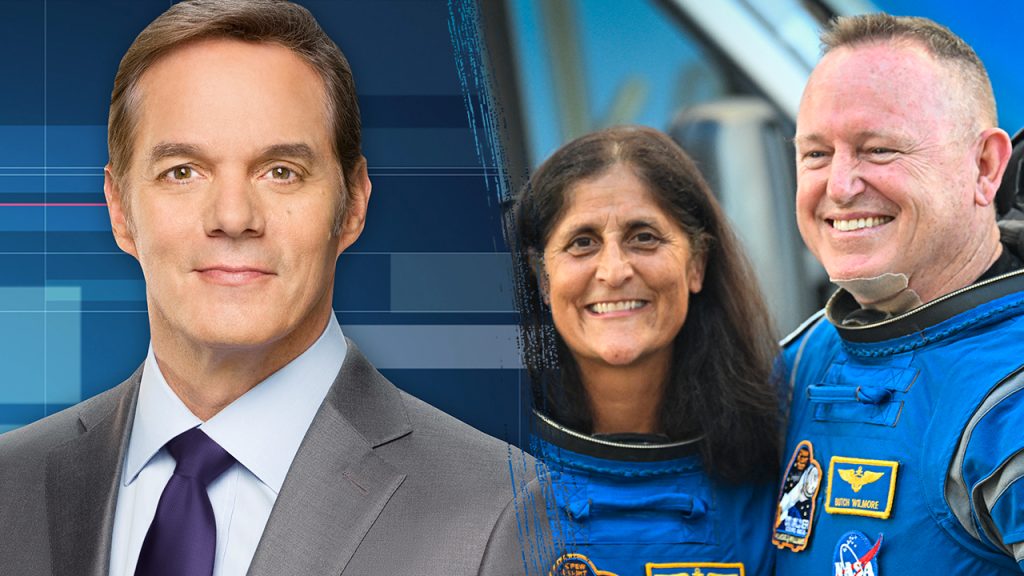NASA astronauts Butch Wilmore and Suni Williams, who were stranded in space for 286 days, are set to give their first interview since their dramatic return to Earth. The interview will be conducted by Bill Hemmer and broadcast live on “America’s Newsroom.” Their experiences during the extended stay in space and insights into future space exploration efforts are expected to be pivotal topics of discussion.
| Article Subheadings |
|---|
| 1) Astronauts’ Journey: Timeline of Events |
| 2) Technical Challenges: Understanding the Failures |
| 3) Arranging the Rescue: NASA and SpaceX Collaboration |
| 4) Presidential Involvement: The Role of Government |
| 5) Future of Space Exploration: Insights from the Astronauts |
Astronauts’ Journey: Timeline of Events
Bill Hemmer’s interview scheduled to be aired on March 31, marks the first time that Butch Wilmore and Suni Williams will share their story since their return from the International Space Station (ISS). The duo had embarked on their mission in June 2025, initially planned for an eight-day duration, but persistent complications prolonged their stay significantly. In September, as technical issues were discovered with their Boeing Starliner spacecraft, NASA made the decision to keep the astronauts on board the ISS while sending the craft back to Earth unmanned. Ultimately, the astronauts were rescued and returned home on March 18, 2026, ending an extraordinary period of nearly ten months in orbit.
Technical Challenges: Understanding the Failures
The prolonged stay of astronauts Wilmore and Williams has prompted an examination of the technical difficulties faced by the Boeing Starliner. During its initial launch attempt, multiple technical failures were identified, resulting in the decision by NASA to prioritize safety over expediency. The implications of these technical challenges are critical as they highlight potential vulnerabilities in current space exploration technology. Both astronauts, recognized veterans of space travel and retired U.S. Navy test pilots, have seen the evolution of space travel and will likely express their views on technological advancements when they appear in the interview. Their firsthand experiences will shed light on how unexpected challenges can arise in space missions and the importance of rapid response protocols.
Arranging the Rescue: NASA and SpaceX Collaboration
The collaborative effort between NASA and SpaceX played a crucial role in devising the rescue mission that successfully returned Wilmore and Williams to Earth safely. As part of NASA’s commercial crew program, SpaceX has conducted multiple operational human spaceflight missions, which have been essential for maintaining the ongoing presence of astronauts aboard the ISS. The Crew-10 launch that brought the astronauts back also included new mission members, indicating the program’s efficiency in ensuring that the ISS remains adequately staffed. The incident underscores the significance of such partnerships in addressing crises in space and how private industries can complement government efforts in aerospace initiatives.
Presidential Involvement: The Role of Government
The return of Butch Wilmore and Suni Williams carries with it political implications, as officials have sought to leverage their experience to comment on presidential intervention. Former President Donald Trump has been credited by some as instrumental in the decision-making processes regarding the astronauts’ return, highlighting governmental urgency in times of crisis. Following the astronauts’ return, the White House has faced criticism about the perceived lack of rapid response during the Biden administration concerning the challenges faced by the astronauts during their time in space. The contrasting administrative responses provide a rich context in understanding how political dynamics intersect with space exploration efforts.
Future of Space Exploration: Insights from the Astronauts
As the interview unfolds, audiences can anticipate significant insights about the future of space exploration from both Wilmore and Williams. Their extended duration in space will likely inform discussions on human resilience, the psychological aspects of long-term space missions, and the necessary advancements in technology to ensure astronaut safety and mission success. Furthermore, their perspectives may also touch upon upcoming NASA missions, international space collaborations, and the ongoing endeavors of private space companies like SpaceX. As space exploration continues to evolve, the astronauts’ experiences serve as both lessons learned and anticipations for future opportunities in human space travel.
| No. | Key Points |
|---|---|
| 1 | Astronauts Butch Wilmore and Suni Williams were stranded in space for 286 days due to technical issues with their spacecraft. |
| 2 | NASA chose not to return the astronauts on the faulty spacecraft, prioritizing their safety. |
| 3 | The successful rescue mission involved collaboration between NASA and SpaceX, demonstrating the role of private industry in space exploration. |
| 4 | Political dynamics influenced how the astronauts’ challenges were perceived, with past administrations being involved in the narratives. |
| 5 | Insights from the astronauts are expected to shape future discussions about human spaceflight and NASA’s exploration strategies. |
Summary
The return of NASA astronauts Butch Wilmore and Suni Williams marks a significant event in space exploration history. Their pending interview promises to reveal critical insights into their extended mission, the collaborative efforts that ensured their safe return, and the broader implications for future space endeavors. As interest in space travel continues to grow, the perspectives of these seasoned astronauts are valuable contributions to understanding both the challenges and future possibilities in this ever-evolving field.
Frequently Asked Questions
Question: How did the astronauts get stranded in space for so long?
The astronauts were unable to return on their scheduled mission due to technical issues discovered with their Boeing Starliner spacecraft, which led NASA to prioritize their safety and keep them aboard the ISS.
Question: What was the rescue mission like?
The rescue mission involved collaboration between NASA and SpaceX, leveraging SpaceX’s capabilities in providing safe transport for astronauts back to Earth while ensuring that the ISS remained adequately staffed.
Question: What are the implications for the future of space exploration?
The experiences of Wilmore and Williams provide insights into the technological and psychological challenges of long-duration space travel, which will inform future missions and improve safety protocols for astronauts.


